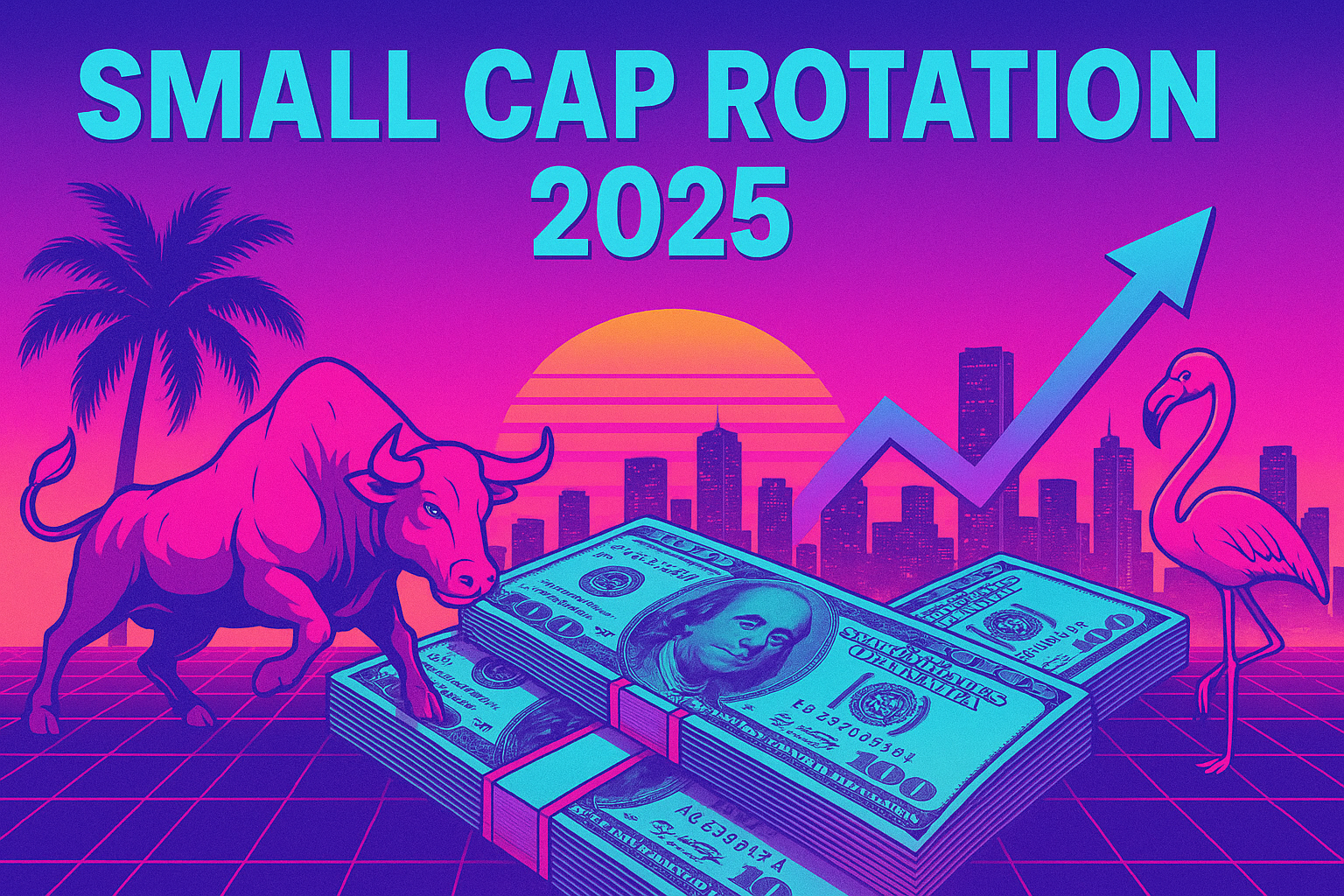Why the Next 12–24 Months Could Belong to Small Caps
Good morning, friends.
After a decade of megacaps hogging the spotlight, I think we’re finally set up for a meaningful rotation into small caps over the next 12–24 months. The setup checks a lot of boxes we watch: an easing Fed, moderating inflation, widening market breadth, and a compelling valuation gap. Below I’ll keep this tight, practical, and focused on what matters for real portfolios.
What History Says (in plain English)
- Early-cycle advantage: Small caps have historically led in the early phase of economic recoveries and in the months following Fed policy shifts toward easing. That’s usually when financing costs fall, risk appetite improves, and domestic demand firms up.
- Falling inflation sweet spot: When inflation is elevated but decelerating, small caps often outpace large caps. Easing price pressures help margins for labor‑intensive, domestically focused companies.
- Yield curve & credit: Steeper curves and narrowing credit spreads tend to coincide with periods when smaller companies do better, as capital gets cheaper and lenders loosen up.
- Post‑cut momentum: After the Fed starts or finishes a cutting cycle, small caps have often put up double‑digit returns and outpaced large caps over the following 6–12 months. The key caveat: it works best when the economy avoids a hard landing.
Why the Next 1–2 Years Look Constructive
- Valuations still attractive: Small caps trade at a sizable discount to large caps on forward earnings and sales. After years of underperformance, the relative spread is wide by historical standards. That gives us asymmetric upside if earnings re-accelerate.
- Easing + breadth = tailwind: As policy shifts from restrictive to less restrictive, we usually see leadership broaden beyond a handful of giants. That broadening is typically the friend of small caps.
- Domestic lever: Small caps derive a larger share of revenues from the U.S. economy. If growth stabilizes while inflation cools, that domestic tilt can flip from headwind to tailwind.
- M&A optionality: Lower rates and cheaper valuations historically boost deal activity, providing another path to returns—especially for high‑quality, cash‑generative small companies.
What Could Go Wrong (and how we manage it)
- Hard landing / widening spreads: If growth slips and credit spreads widen meaningfully, highly levered or unprofitable small caps can lag. We manage this by prioritizing balance‑sheet strength and free‑cash‑flow.
- Rate‑cut “for the wrong reason”: If cuts are driven by a severe downturn rather than a normalization of policy, small caps’ cyclicality can bite. Our playbook stresses quality first.
- Tariff/trade shocks: Smaller firms have less flexibility to absorb abrupt cost changes. We size positions and diversify exposures accordingly.
How We’re Positioning (strategy, not hype)
At RollingWave, we’re not chasing everything with a small ticker. We’re tilting—deliberately—toward the parts of small cap that historically benefit most in this regime:
- Quality small caps > broad beta
Favor consistent profitability, lower net leverage, and positive FCF. When small caps run, quality tends to participate—with less drawdown risk. - Cyclicals with operating leverage
Select industrials, select financials, services, and niche tech where falling rates and steady demand can flow through quickly to earnings. - SMID sweet spot
We like the smid bucket (upper end of small into mid). It captures liquidity and balance‑sheet quality while keeping the domestic, rate‑sensitive upside. - Index hygiene
When we use ETFs, we prefer constructions that reward profitability (e.g., S&P SmallCap 600) rather than pure size alone. We also pair with active names where our research gives us an edge. - Risk controls
Position sizing, staged entries, and catalysts. We’ll add on confirmation: improving earnings revisions, breadth expansion, and continued curve steepening.
What to Watch from Here
- Curve & spreads: A sustained steepening 2s/10s and narrowing high‑yield spreads.
- Earnings revisions breadth: Turn positive for small caps relative to large.
- Dollar drift: A softer dollar tends to help domestic cyclicals and exporters down‑cap.
- Policy path: An easing Fed with growth stabilizing—not collapsing.
Bottom Line
I believe the backdrop is lining up for small caps to take the baton. We’re positioning portfolios to participate selectively—with an emphasis on quality, cash flow, and catalysts. If we get the “good kind” of easing and a broadening market, history suggests the next leg could favor the little guys in a big way.
If you want to see how this tilt would look alongside your current holdings, let’s talk.
This material is for informational purposes only and is not a recommendation. All investments involve risk, including possible loss of principal.
— Jacob / RollingWave Capital
Tags: small caps, market cycle, Fed, portfolio strategy, smid caps, quality, breadth
